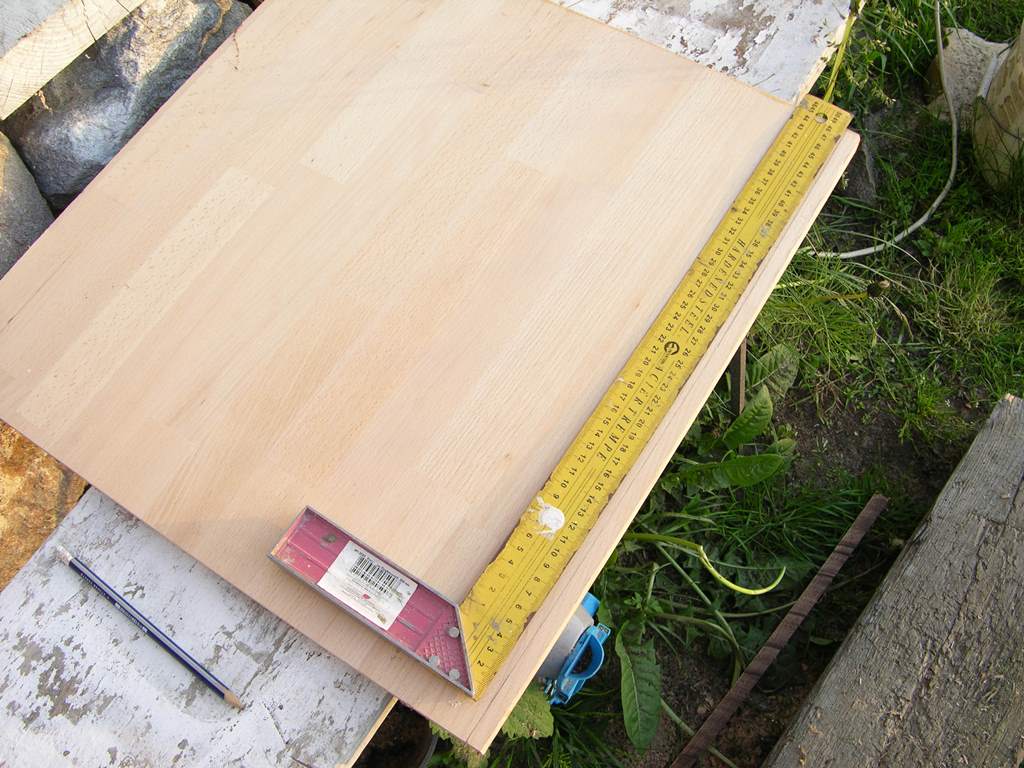Who would reject the convenience of pull-out drawers and baskets?! But what about shelves? I`ve found thousand results for “pull out shelves” but none of them showed me the “pull-out open shelves”. After all who needs an open shelf to be pulled out?! Well, I do.
Although we prefer built-in and integrated appliances we have a lot of open shelves in the kitchen, including the lower kitchen cabinets, partially they`re open too. But what if the shelves are too deep?

In closed lower cabinets you can simply make pull-out drawers with ordinary ball-bearing slides. But the shelves are too thin (most cabinet shelves top out at ¾″ (18 mm) thick). There seemed to be no way to hide those wide slides (although they come 2″ (45 mm) and 1 1/16″ (27 mm) wide as well) and buy really expensive undermount slides, which was not an option at all 🙁
Thin grooved ball-bearing slides
Recently I took a walk to the local hardware store (which is more preferable than any other store in the world for me, except maybe the candy store 😀 ) and came across thin grooved ball-bearing slides. They are less than ¾″ (17 mm) wide and are up to 20″ (50 mm) long. The best part was that they were extremely cheap. I decided to give it a try.
There are also some disadvantages of these thin slides:
- They cannot be split up. That means you`ll have to unscrew the shelves before taking them off (in case you`ll need to take them off 🙂 ).
- They have a low 22 lb (10 kg) load rating.
- I`ve seen only partial extension thin runners.
- The shelf/drawer box mount slide has holes for screws on both ends. But as we cannot separate it from the wall-mount runner we cannot use the hole on the other end. So I made additional hole in the max opened position with a 1/8″ (3 mm) metal drill bit which took me five minutes for each hole (including coffee brakes).
So I took out the shelves and mounted two pairs of these thin 1 ¾″ (45 mm) long slides for 20″ (50 mm) deep shelves on our brick cabinet walls. The full instruction on How to mount ball-bearing slides on a brick wall are here.
Shelves
The shelves are made of ¾″ (18 mm) thick beech wood (the countertops leftovers). Which means there`s only 1 mm left to cover the runners if we make a groove for the slides in them. But it`s ok, it wouldn`t break down because beech is quite firm and it wouldn`t hold any weight. The shelf lays upon the drawer slides but they are screwed to the sides of the shelves.
How to cut a notch in wood with a router
There are several ways to cut a notch in wood using different tools: a hammer and chisel, a circular saw and a router. I know, a router isn`t a must-have home appliance but if you are an eager DIYer – it`s a very handy tool.
- Cut the shelves to the size of the opening minus 2 mm (a sliding gap). Sand it.
- Measure the notch (max 3/8″ (10 mm) from the edge), mark it with a simple pencil.
- Select an appropriate premium quality (for firm wood) router bit. In our case it would be a straight 3/8″ (10 mm) bit.
- Set the depth (17 mm in our case) on the router and plunge down into your wood piece until you have created the notch you want.
- Move the router along the mark you made. Frankly, it was a tough job, and I spoiled the first shelf. But practice makes perfect, so it`ll be Ok after making a couple of dozens of such shelves 😆
Whew, it`s OK if the outer edge isn`t perfect 🙂
Paint the shelves. Then just put them on the open slides and screw them together (make pilot holes through the holes of the sliders with a small drill – this will ease the screwing process). I used tiny 3/8″ (10 mm) screws.

I use my favourite kitchen machine every second day and now it`s much more easier to get it out of that lowest shelf.

How do you like this idea of slide-out open shelves?












